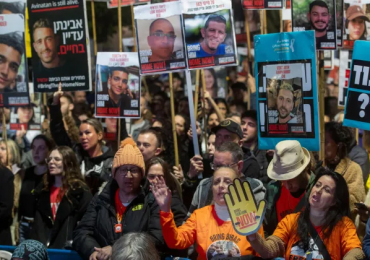A white family in Atlanta, Georgia today has 46 times as much wealth as a Black family; a racial wealth gap that is exactly the same as it was nationally in 1863 when Abraham Lincoln signed the Emancipation Proclamation ending the era of legalized enslavement. Over forty years of neoliberal economic policy have profoundly exacerbated income and wealth inequality especially across racial lines. The crisis of the immoral racial wealth gap will remain until we deploy evidence-based policies that address both historical and contemporary barriers to wealth generation.
[time-brightcove not-tgx=”true”]
Increasing people’s income through higher wages and guaranteed income is critical, but income is only one facet of wealth and it’s not enough to start to close the wealth gap by itself. Unlike income, which generally speaking comes as a paycheck, wealth takes many forms. The nature of compounding interest has always meant that a great way to make money in America is to have money; to graduate college debt-free and start a job with a 401-K, to have your parents float you a down payment on your first house, or to inherit “startup capital” from a beloved auntie to start your dream business. If we are serious about closing the racial wealth gap, our financial and political strategies must stabilize income and generate wealth.
Read More: Ronald Reagan’s Policies Continue to Exacerbate the Racial Wealth Gap
Poverty is not inevitable, but it is entrenched. To meaningfully address American poverty requires strategies that address the full financial picture of providing steady, stable income, and generating meaningful wealth building. Americans who are struggling to make ends meet today need steady cash flow through guaranteed income programs and wealth-building interventions like baby bonds.
A “baby bond,” or guaranteed inheritance, is a public fund paid out as a lump sum when the recipient reaches a certain age. Children shouldn’t be limited in achieving their economic potential because of the family they are born into or the zip code where they live. Baby bonds are already part of the state programming in California and Connecticut and are under consideration in six other states. Connecticut’s newly launched baby bond program automatically invests $3,200 for any child that qualifies for Medicaid, allowing a young adult to claim those funds to purchase a home, save for their retirement, invest in a business, or pay for tuition or job training. And there are pending bills in Massachusetts, Vermont, and Rhode Island to do the same. On the federal level, Senator Cory Booker (D-N.J.) made baby bonds a cornerstone of his presidential campaign in 2021 and with U.S. Representative Ayanna Pressley (D-MA) introduced the American Opportunity Accounts Act, which would create savings accounts for every child for $1,000 at birth, dramatically changing the trajectory of a child’s life.
Now, new research on cash transfers reinforces the existing evidence on guaranteed income and provides further backing for the power of significant, lump-sum payments like baby bonds as a critical strategy for addressing entrenched generational poverty. Here in the U.S. we already have over 300 studies and 150 pilot programs across the country that prove just how powerful guaranteed income is as a tool for economic stability with outsized impacts on improving mental health, employment, and a sense of self-determination. Unsurprisingly, the new Kenyan-based research found that lump sum and longer-term monthly payments are each more effective than short-term financial support. The case for sustained, consistent, and scaled investment could not be clearer.
Poverty is a generational problem and it’s one that we can and should solve, but to do so will require holistic and generational approaches that fully take into account how wealth-building works. We need a multi-pronged approach that incorporates cash transfers, guaranteed income and baby bonds, all working in tandem to address unique components of generational poverty. Pairing these programs provides stability and mobility, accomplishing more together than either approach can provide on their own.
Building off this evidence-based model, there is work afoot in Atlanta right now to bring together guaranteed income and baby bond programs under the GRO Fund’s Seed Capital for Life which would provide hundreds of young people in Georgia a “baby bond” payout of $40,000 plus a guaranteed income of $500 a month. Programs like this build economic security and close the racial wealth gap in a way that addresses structural racism head on. Given that in just the last few years, the five richest men have doubled their fortunes while 5 billion people have gotten poorer worldwide, we need more policymakers to follow the example of Georgia, Connecticut, and California, and invest in people and communities. These policies point to a broader opportunity to build our next economic framework that guarantees what Americans need not just to survive, but thrive. With the data in hand on the effectiveness of these “both and” strategies for closing the racial wealth gap, what are we waiting for? Another 161 years to go by?
Leave a comment








